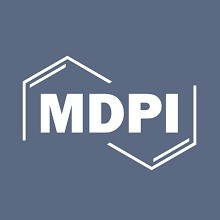
دانلود مقاله اندازه گیری سطح کلان مشروعیت سازمان
چکیده
کلید واژه ها
1. مقدمه
2. مرور مطالعات پیشین: مشروعیت سازمانی
3. روش شناسی
4. نتایج
5. بحث
6. نتیجه گیری ها
منابع
Abstract
Keywords
1. Introduction
2. Literature Review: Organizational Legitimacy
3. Methodology
4. Results
5. Discussion
6. Conclusions
Author Contributions
Acknowledgments
Conflicts of Interest
References
چکیده
اگرچه حوزه مشروعیت سازمانی در حال پیشرفت های بزرگی است، اما دانشگاهیان همچنان با چالش سنجش آن مواجه هستند. در حال حاضر، دانشگاهیان بر بهبود و یکسان سازی سیستم های سنجش مشروعیت در سطح خرد متمرکز هستند. با این حال، سنجش مشروعیت در سطح کلان با توجه به نیازها و امکانات ارائه شده توسط فناوری های جدید تکامل نیافته است. این تحقیق با هدف توسعه روشی جدید برای سنجش مشروعیت سازمانی در سطح کلان، قادر به پردازش مقادیر زیادی از اطلاعات است. برای این منظور، تجزیه و تحلیل محتوای خبری 50 شرکت سازنده EuroStoxx50 برای یک سال کامل انجام شده است. با انجام این کار، ما سه سهم کلیدی در مدیریت مشروعیت سازمانی داریم. اول، ما به لطف تکنیکهای پردازش اطلاعات انبوه، اندازهگیری کاملتر و مطمئنتری از مشروعیت سازمانی ارائه میکنیم، و راهحلی مبتنی بر فناوری برای مشکل منسوخ بودن مدلهای ارزیابی مشروعیت در سطح کلان ارائه میکنیم. دوم، ما شواهد تجربی از رابطه بین مشروعیت و موفقیت سازمانی بر اساس تجزیه و تحلیل اطلاعات انبوه ارائه می دهیم. سوم، شواهدی را نشان میدهیم که به دلیل استفاده از منابع مختلف برای این منظور، یک سوگیری در سنجش مشروعیت ارائه شده است.
توجه! این متن ترجمه ماشینی بوده و توسط مترجمین ای ترجمه، ترجمه نشده است.
Abstract
Although the field of organizational legitimacy is undergoing great advances, academics are still facing the challenge of its measurement. Currently, academics are focusing on improving and homogenizing legitimacy measurement systems at the micro level. However, measuring legitimacy at the macro level has not evolved according to the needs and possibilities provided by new technologies. This research aims to develop a new methodology to measure organizational legitimacy at the macro level, capable of processing large amounts of information. To this end, an analysis of the news content of the 50 companies that make up the EuroStoxx50 has been conducted for a full year. By doing so, we make three key contributions to managing organizational legitimacy. First, we provide a more complete and reliable measurement of organizational legitimacy thanks to mass information processing techniques, providing a technology-based solution to the obsolescence problem of legitimacy evaluation models at the macro level. Second, we provide empirical evidence of the relationship between legitimacy and organizational success based on the analysis of mass information. Third, we show evidence that a bias is introduced in the measurement of legitimacy due to the use of different sources for this purpose.
Introduction
Legitimacy has become an area of research of great interest for academics [1] as it has been proven to be a vital asset for the survival of organizations [2]. Organizational legitimacy refers to the social acceptance of an organization’s actions [3]. This social acceptance enables organizations to influence stakeholders’ behavior [4] and to achieve greater levels of access to key resources [5,6]. Organizational legitimacy researchers are providing numerous advances to deepen our understanding of its causes and consequences [7]. However, due to its intangible nature, there are still many obstacles and difficulties to be managed for its proper and accurate measurement [8]. Organizational legitimacy emerges from the individuals’ evaluations of the actions performed by the organizations. These evaluations are subjected to numerous factors that directly influence individuals and are manifested in two different levels (macro and micro). At the micro level, the individual´s perception regarding the acceptance and desirability of organizations has been measured using surveys e.g.. At the macro level, organizational legitimacy has been primarily measured through news media content analysis, e.g. the analysis of organizational compliance with accreditation bodies, e.g. and recently, sentiment analysis.
Conclusions
6.1. Macro Level Measuring Legitimacy by Online Media Useful conclusions are drawn from this study for the proper administration of legitimacy in the media, as well as for making observations on factors that influence it. A relationship has not been found between the number of news items published about a company and the legitimacy obtained from it, as long as the company has generated enough content to be analyzed. It does not appear that the companies with the strongest media presence are benefited or harmed in terms of their legitimacy. Therefore, a company that wishes to improve its legitimacy in online media does not need to incur expensive communication campaigns to improve its presence in that media; carrying out the usual company activities is sufficient. The most significant limitations of this study are related to the process of data extraction and processing. There is no official support for tools that enable the extraction of information from news aggregators, so it has been necessary to resort to third-party programs for this, which do not offer total reliability and may damage the integrity of the data obtained. In addition, the name of some companies, such as Total SA, as well as the lack of search options for literal terms in databases such as Lexis Nexis, makes analysis difficult, since it is not possible to separate the news that mention the company from those that use the term “total”.
